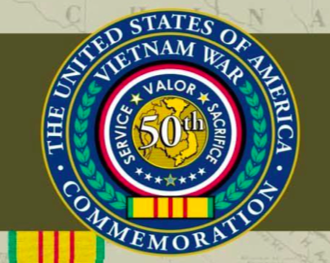The Pentagon's Commemorating the 50th Anniversary of the Vietnam War. Just How Accurate Is It?

There has been controversy recently over a program to commemorate the 50th anniversary of the Vietnam War, run by the Department of Defense. An article in the New York Times October 10, “Pentagon’s Web Timeline Brings Back Vietnam, and Protesters,” by Sheryl Stolberg, mentioned that I said I had found minor inaccuracies in an Interactive Timeline, that the Department of Defense has placed online as part of this project. I have been asked to cite examples.
I have looked at the timeline for the two years in which I am particularly interested, 1964 and 1968.
For 1964, I noticed the entries:
MAY 22, 1964: AIR AMERICA FLIES FIRST SEARCH AND RESCUE MISSION IN LAOS AND NORTH VIETNAM
Air America, formerly the Civil Air Transport, begins search and rescue missions in Laos and North Vietnam. Its first rescue of a downed flyer is 6 June 1964.
Comment: The first rescue of a downed flyer in Laos was on June 8, 1964. There had been an attempted rescue of a previous downed flyer on June 6, but it had failed. I do not believe any such search and rescue missions were flown in North Vietnam at any time in 1964.
AUGUST 2, 1964: GULF OF TONKIN INCIDENT (¼)
. . . On August 2, 1964, the destroyer USS Maddox is stationed in the Gulf of Tonkin in support of South Vietnamese espionage operations off the coast of North Vietnam. . . .
Comment: The operations off the coast of North Vietnam were not espionage operations, they were armed attacks against coastal facilities. And the Maddox was not really stationed in support of those operations; the Maddox was on an intelligence-gathering mission.
When Nick Turse first asked me to look at the timeline early this year, the entries that caught my eye included:
JULY 11,1964: JOINT CHIEFS OF STAFF (JCS) UNVEILED "94 TARGET LIST"
AUGUST 4, 1964: TWO U.S. AIRCRAFT DOWNED
I told Turse that the Joint Chiefs had not even come close to unveiling that famous list of 94 potential bombing targets in North Vietnam during July 1964, and that no American aircraft had been downed on August 4, 1964. These entries have since then disappeared from the timeline, probably as a result of prodding by Turse.
For 1968, I noticed the entries:
JANUARY 30, 1968: VIET CONG LAUNCH TET OFFENSIVE
From January 30 to February 28, 1968, an estimated 84,000 communist forces carry out a countrywide offensive that starts during the Vietnamese Tet holidays. Viet Cong and North Vietnamese troops strike 36 provincial capitals and capture most of Hue, the old imperial capital of Vietnam. . . . In the central coastal area, the fighting starts on January 29 because enemy commanders there use a different lunar calendar.
Comment: This entry treats the Tet Offensive as having begun on January 30 for South Vietnam as a whole, but on January 29 in the central coastal areas. Each of these dates is one day off. It began on January 31 in South Vietnam as a whole, but on January 30 in the central coastal area.
JANUARY 31, 1968: BATTLE OF HUE BEGINS
. . . The defeat of the Communist forces at Hue possibly prevents them from taking the two northern provinces of South Vietnam.
Comment: The suggestion that if the Communist forces had managed to hold onto Hue, this might have enabled them to take the whole of the two northern provinces of South Vietnam, is an absurd exaggeration of the importance of Hue and of the forces fighting there.
FEBRUARY 24, 1968: NAVY ACTIVATES TASK FORCE CLEARWATER TO KEEP SHIPMENTS TO KHE SANH
Concerned that the water access to Dong Ha, the main transshipment point to Khe Sanh, would become cut off, General Creighton Abrams, Deputy Commander of MACV, requests that the Navy stand up a patrol force for the Cua Viet River. . . .
Comment: Dong Ha was not, during that period, a significant transshipment point, much less the main one, supporting Khe Sanh. If Khe Sanh had been getting supplies by road, Dong Ha would have been a vital transshipment point, but Khe Sanh was supplied entirely by air.